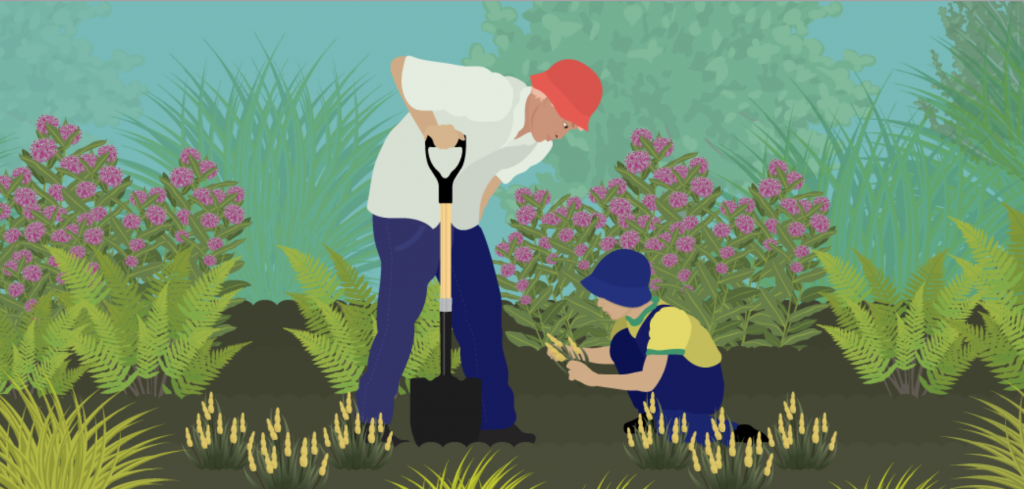
Matrix planting is a form of self-sustaining gardening that focuses on diverse, aesthetically pleasing plants over food-bearing (herbs, fruits and vegetables) varieties.
This gardening method is steeped in natural balance between plant species occupying the same space. This balance, and opportunity for growth, includes the sharing of resources. The controlled environment chooses and maintains plants that allow the formation of a garden grid where which plants complement the existence of one another. No weeds are allowed to enter the picture. Simply put, matrix gardening is a concept where plants grow in unison naturally, yet not in a manner directly imitated by nature. Given matrix planting’s focus on aesthetics, does it apply to our Foundation’s goal to support self sustaining communities? Can it be used to complement your urban farming initiative? Let’s find out.
Why Matrix Planting is Important to Your Community Garden Plan
Matrix Planting Boosts Biodiversity
Natural vegetation in practically any climate will have a diverse make-up of plant species. This biodiversity sets the scene for your plants to grow as nature intended. Diversity minimizes risk. The more singular your garden make-up the more susceptible you are to losing your garden to disease or infestation. Polyculture (the use of multiple crops in the same agricultural space) is a core component of permaculture, which dictates a system of agricultural and social design principles that are focused on simulating and/or harnessing the patterns and features observed in nature. Polyculture is conducive to improved soil fertility and the comprehensive cover provided by a matrix grid helps the garden retain moisture. A matrix garden neighboring your food-bearing garden can only encourage the harmonic and sustainable existence of the entire plot.
Matrix Planting Attracts Beneficial Bugs
Beneficial bugs are essential to the health of any food-bearing community garden. Without them, pests (which beneficial bugs prey on) can wipe out your crops in a single season. They (as primary pollinators) are also needed to pollinate your plants. Decorative plants and flowers used in matrix gardening attract the types of insects you want near your urban farm. From this purely functional perspective one can consider matrix planting an essential part of a truly sustainable community farming project.
Matrix Planting Creates Community Green space
Incorporating a matrix garden at the same site of your food-bearing garden will bring together the local community. It creates a green space that is not only functional, but visually attractive, encouraging visits and participation from neighboring households. It will also add to these initiatives to get local children more more engaged in the project. Matrix gardens require less maintenance and are multi-seasonal, which means it becomes a destination point throughout the four seasons.
Matrix Planting Can Help Secure Additional Community Support
By creating a more visually appealing atmosphere around your garden you enhance public perception. Since garnering support from media, municipal, corporate and organizational interests is necessary to the long-term success of your project, you want to add aesthetics to your current public relations plan. Municipalities will require that your garden/farm fit the visual criteria of a given locale. A well-planned matrix can make this happen. Local media is more likely to take notice and spread the word and the corporations and organizations looking to sponsor your project with supplies and funding are more likely to do so. Incorporating the matrix planting initiative into your community garden and urban farming plan may indeed help your project grow.
Thanks to our friends from Fix.com especially @EmilyNeil_MSVU who shared this lovely infographic; you can view more of the benefits of matrix gardening below.

Source: Fix.com Blog








